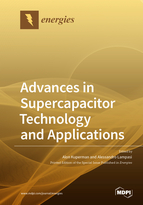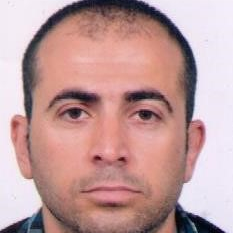Advances in Supercapacitor Technology and Applications
A special issue of Energies (ISSN 1996-1073). This special issue belongs to the section "D: Energy Storage and Application".
Deadline for manuscript submissions: closed (31 January 2020) | Viewed by 38687
Special Issue Editors
Interests: photovoltaics; power electronics; energy; renewable energy; power generation; energy conversion; distributed generation; energy engineering; power converters; power quality; wireless power transfer
Special Issues, Collections and Topics in MDPI journals
Interests: electrical and electronic systems for nuclear fusion and experimental physics; power electronics; energy storage; applied electromagnetics; applied nanotechnology; modeling and simulation; measurement and testing techniques
Special Issues, Collections and Topics in MDPI journals
Special Issue Information
Dear Colleagues,
Energy storage is a key topic for research, industry and business, gaining more and more interest. Supercapacitors (also known as ultracapacitors, electrochemical capacitors or double-layer capacitors) feature exceptional capacitance values, creating new scenarios and opportunities in both research and industrial applications, also because the related market is relatively recent. Developments in supercapacitor technology and supporting electronics, combined with reductions in costs, may revolutionize everything from large power systems to consumer electronics. We are inviting submissions to this Special Issue of Energies to collect the latest developments and applications in this field, but also to compare supercapacitors with other energy storage solutions.
Topics of interest for publication include, but are not limited to:
- Supercapacitor technologies, processes and materials;
- Special devices for unconventional applications or harsh environments;
- Hybrid and lithium-ion capacitors;
- Experimental techniques for testing, characterization, monitoring and diagnosis of supercapacitors;
- Approaches and tools for supercapacitor modeling and simulation;
- Sizing and optimization algorithms;
- Capacitor chargers and management systems;
- Pulsed power supplies and fast controls;
- Power electronics and converters for supercapacitors interfacing;
- Systems and applications exploiting supercapacitors, such as energy storage, uninterruptible power supplies, smart grids, advanced transportation, renewable sources and clean energies;
- Supercapacitor integration and combinations with other energy storage solutions;
- Electrical vehicles, machines, starters and drives supported by supercapacitors;
- Power quality, load management, peak shaving and back-up issues;
- Energy harvesting and recovery, including regenerative braking;
- Supercapacitors for sensor networks and distributed systems;
- Reliability and safety of supercapacitors and related systems;
- Technical-economical evaluations and market analyses.
Prof. Dr. Alon Kuperman
Dr. Alessandro Lampasi
Guest Editors
Manuscript Submission Information
Manuscripts should be submitted online at www.mdpi.com by registering and logging in to this website. Once you are registered, click here to go to the submission form. Manuscripts can be submitted until the deadline. All submissions that pass pre-check are peer-reviewed. Accepted papers will be published continuously in the journal (as soon as accepted) and will be listed together on the special issue website. Research articles, review articles as well as short communications are invited. For planned papers, a title and short abstract (about 100 words) can be sent to the Editorial Office for announcement on this website.
Submitted manuscripts should not have been published previously, nor be under consideration for publication elsewhere (except conference proceedings papers). All manuscripts are thoroughly refereed through a single-blind peer-review process. A guide for authors and other relevant information for submission of manuscripts is available on the Instructions for Authors page. Energies is an international peer-reviewed open access semimonthly journal published by MDPI.
Please visit the Instructions for Authors page before submitting a manuscript. The Article Processing Charge (APC) for publication in this open access journal is 2600 CHF (Swiss Francs). Submitted papers should be well formatted and use good English. Authors may use MDPI's English editing service prior to publication or during author revisions.
Keywords
- supercapacitors
- energy storage
- energy management
- power systems
- power electronics
- pulsed power
- high power testing and modeling
- fast control
- peak shaving
- electrical machines and drives
- electric and hybrid vehicles







